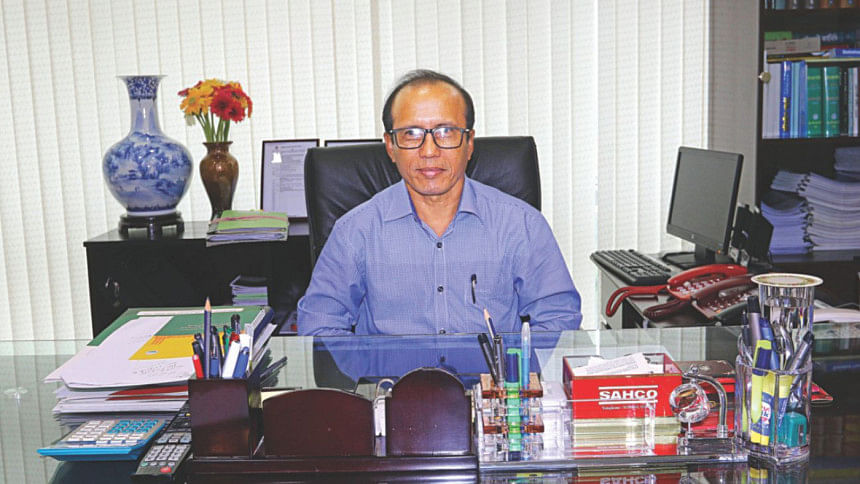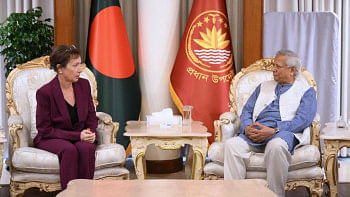Mirsarai economic zone to be ready by 2018

Mirsarai economic zone is set to be the first state-owned industrial enclave to see industries operating, said Paban Chowdhury, executive chairman of Bangladesh Economic Zones Authority.
None of the 60 announced state-owned economic zones is yet to become operational although seven years have passed since the formation of Beza. But at the private economic zones, industrial units have been set up and production is going on.
“You will see the wheels rolling in 2018,” he said, adding that it would not be right to see the state-owned economic zones and private economic zones separately.
The private economic zones are also Beza's initiative, he told The Daily Star in an interview recently.
“We approached the leading businesses to popularise the private economic zones and they came on board one by one,” he said, adding that nearly Tk 10,000 crore has been invested in the private economic zones.
Beza has so far given the final clearance for establishment of five private economic zones.
“We worked day and night to develop this. I even visited a private economic zone at 4.30am. So it would not be wise if you say those economic zones have come out of nowhere.”
Asked about the delay in state-owned zones, he said land acquisition is not an easy task.
Already 16,000 acres of land has been acquired for the Mirsarai economic zone; acquisition of additional 7,000 acres is underway to establish the zone on 30,000 acres. Beza has also acquired 12,000 acres in Cox's Bazar and is in the process of getting hold of another 16,000 acres.
The Mongla economic zone is completely ready but it cannot start production because of a stay on construction of factories near the Sundarbans.
And plots have been given for the establishment of 24 factories at the state-owned economic zones at Sreehatta and Moulvibazar.
“How could you say we have not developed any? When I first went to Mirsarai, there were only buffaloes grazing. Today, you will see vehicles plying on the paved roads.”
Chowdhury said he and his team worked tirelessly over the last three years to get things in order to attract investment, mainly from abroad.
One of the main targets of Beza is to attract foreign investment for job creation, technology transfer and skills development.
A number of foreign investors are showing interest in getting plots at the Mirsarai economic zone, he said, citing the Indian paint company Asian Paints as an example.
Asian Paints has already put in a deposit to confirm its plot at the economic zone, according to Chowdhury, who holds an MBA from Bangladesh's premium business school, the Institute of Business Administration.
“They have full confidence in us. We are very much hopeful that a huge amount of foreign investment will come to the Mirsarai economic zone.”
Over the next 15 years, $25-30 billion of investment would flow in to Mirsarai, he said.
Chowdhury also elaborated on the reasoning behind the government's shift in focus from establishing export processing zones to economic zones.
Bangladesh's economy and people's purchasing power have increased over time, creating a large domestic market.
“It is not possible to cater to the huge domestic demand without large scale industrialisation. And this it is not possible through EPZs -- they are built to facilitate establishment of factories to make goods for exports.”
Besides, it is not possible for EPZs to create huge employment opportunities that can have a good impact on the society. But in terms of export, the EPZs definitely have a large impact as shipment from the zones accounts for 19 percent of the total, he said.
“But it is meagre in terms of investment,” he said, citing that only eight EPZs have been established in the last 37 years through the development of 2,200 acres of land.
The EPZs could create four lakh jobs and attract $3 billion plus investments, according to the Beza executive chairman.
“But we have received an investment proposal of $4 billion at Mirsarai from an iron and steel company.”
Most importantly for investors, the economic zones give them the flexibility to both export and cater to the local market. Bangladesh is a late entrant in establishing economic zones compared with its neighbours.
For example, India took the initiative of setting up special zones in 2005, whereas Bangladesh went for it in 2010.
Before India, Indonesia, China and the Philippines have established economic zones.
“Bangladesh has moved to establish economic zones based on the success of others,” he said, adding that the government wants to set up 100 such industrial enclaves by 2030.
As of now, Beza has earmarked 79 sites for economic zones. Of those, 19 are private ones.
The Beza chief said the government is working on six types of economic zones: state-owned, private, special ones for particular products or countries and zones under public-private partnership.
And the leasing rates of land have been determined based on decision of the Beza governing board to ensure transparency and level playing field.
A lower rate has been fixed for the least-developed areas.

 For all latest news, follow The Daily Star's Google News channel.
For all latest news, follow The Daily Star's Google News channel. 



Comments